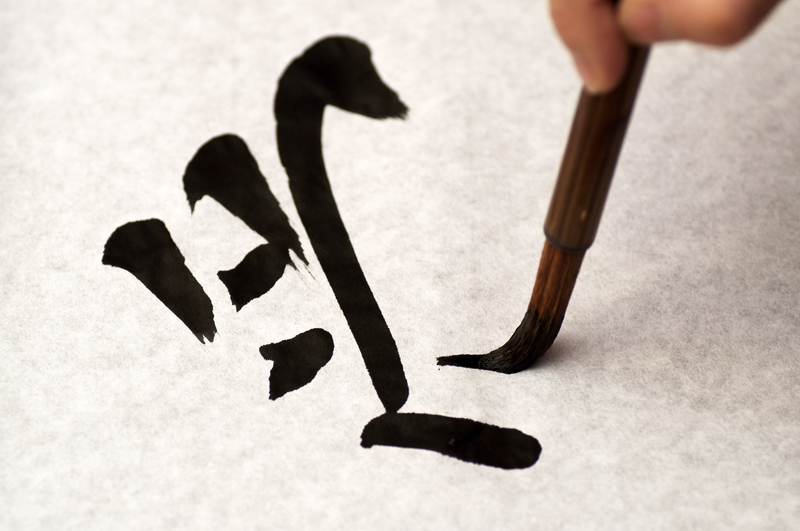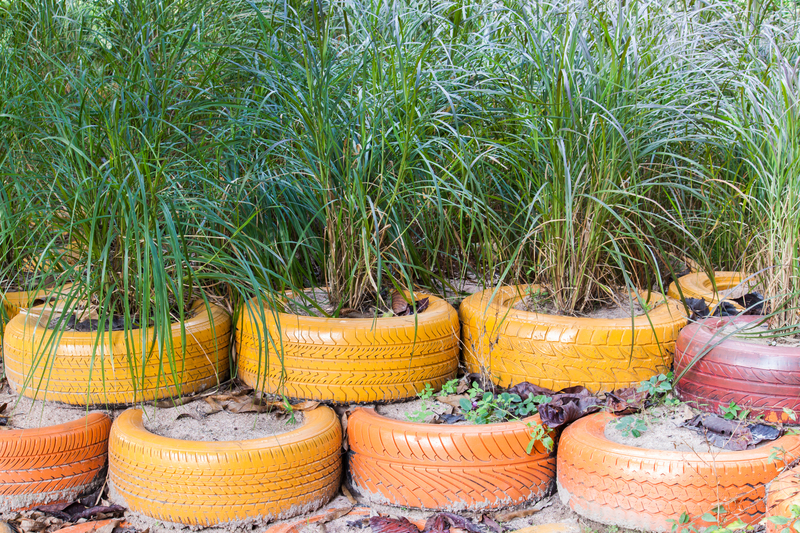Say Goodbye to Mess: The Ultimate Guide to Clearing Clutter and Hoarding
Is your home overwhelmed by piles of stuff, making it difficult to find peace, comfort, or even your car keys? You're not alone. Clutter accumulates quietly, and for many, it turns into hoarding--a larger challenge that impacts not just the home, but your mental well-being.
This ultimate guide to clearing clutter and hoarding is an in-depth resource packed with practical tips, psychological insights, and step-by-step instructions to help you say goodbye to mess for good. Whether you're battling disorganization or confronting hoarding tendencies, this article empowers you to reclaim your space and simplify your life.
Understanding Clutter: Why Do We Accumulate So Much?
At its core, clutter is simply an excess of possessions that crowd our lives and spaces. But why do we let clutter pile up? The reasons are diverse:
- Emotional Attachment: Items represent memories, relationships, or aspirations.
- Fear of Scarcity: Anxiety that discarding something means needing it later.
- Overwhelm: The sheer amount makes it hard to know where to start.
- Busy Lifestyles: Lack of time or energy prevents regular tidying.
- Poor Organization: Without systems, clutter easily accumulates.
Hoarding is a more serious form of clutter, defined as the persistent difficulty discarding items, regardless of their value. Hoarding not only fills a home, but can strain relationships, cause health hazards, and foster chronic stress.

The High Cost of Living with Mess: Physical, Emotional, and Social Consequences
Living in chaos is more than just annoying--it can have significant effects:
- Physical Health Risks: Dust, mold, and blocked exits can make homes unsafe or unhealthy.
- Mental Health Impact: Clutter is linked to increased stress, anxiety, and depression.
- Relationship Strain: Arguments over mess drive wedges between partners, family, and roommates.
- Reduced Productivity: Searching for items wastes time and energy every day.
- Embarrassment and Isolation: Many avoid inviting friends because of their cluttered environment.
Clearing clutter is about much more than appearances--it's about restoring quality of life.
The Psychology Behind Hoarding and Clutter
Understanding the psychology of accumulation helps us address it more effectively. Let's examine the underlying causes:
1. Emotional Attachment To Items
Objects can remind us of happier times or lost loved ones, making it hard to let go. Parting with these items often feels like erasing memories.
2. Fear of Making Mistakes
Worrying you might "need it someday" is a classic thought. The antidote is understanding that most items can be replaced if truly necessary.
3. Perfectionism
If you're waiting for the "perfect time" to organize, clutter will continue to grow. Action--imperfect but consistent--is key.
4. Trauma and Loss
Events like bereavement, divorce, or financial crisis can trigger hoarding behaviors, as people seek comfort or security in objects.
Proven Steps to Declutter Your Home
Ready to roll up your sleeves and tackle the mess? Here is the ultimate plan for clearing clutter and hoarding, broken down into manageable steps:
Step 1: Assess Your Clutter Hotspots
- Walk through your home with a notepad and list the most cluttered areas.
- Identify patterns--are certain rooms always messy?
- Focus on one area at a time to avoid overwhelm.
Step 2: Set Realistic Goals
- Define clear, achievable objectives ("Clear kitchen counter," "Organize bedroom closet").
- Break larger goals into small action steps to avoid paralysis by analysis.
Step 3: Gather Supplies
- Stock up on trash bags, donation boxes, cleaning products, and markers.
- Have a "maybe" box for items you're unsure about.
Step 4: Sort and Prioritize
- Keep: Items you use regularly and love.
- Donate: Usable but unneeded goods.
- Trash: Broken, expired, or useless stuff.
- Relocate: Things that belong elsewhere in the home.
Tip: Make quick decisions--trust your instincts and don't overthink.
Step 5: Clean As You Go
- Vacuum, dust, and wipe surfaces as you clear them.
- You'll not only see a tidier space, but feel more motivated to continue.
Step 6: Organize What Remains
- Invest in shelves, bins, and labels to ensure every item has a "home."
- Store frequently used items in accessible places.
Step 7: Schedule Regular Maintenance
- Establish daily or weekly tidying routines.
- Adopt the "one in, one out" rule for purchases to prevent new clutter.
The Art of Letting Go: Overcoming Emotional Hurdles
For many, the hardest part of decluttering and hoarding recovery is letting go. Here's how to make it easier:
- Take Photos: Capture memories digitally and let the physical item go.
- Practice Gratitude: Thank each item for its purpose before releasing it.
- Start Small: Begin with a single drawer or shelf for a quick win.
- Enlist Support: Ask friends or family for help and encouragement.
- Seek Professional Help: Therapists and professional organizers can provide compassionate guidance, especially for chronic or severe hoarding.
Long-Term Organization Strategies for a Clutter-Free Life
Decluttering isn't a one-time event--it's a lifestyle shift. Follow these expert organization strategies to ensure the mess never returns:
Embrace Minimalism
- Keep only what adds value or joy to your life.
- Prioritize experiences over possessions.
Create Designated Spaces
- Assign homes for keys, mail, bills, and cords.
- Use labeled bins and baskets to contain small items.
Develop Daily Habits
- Make the bed each morning--it sets a positive tone for the day.
- Do a quick evening "reset" for surfaces and floors.
Deal with Paper Immediately
- Sort mail as soon as it arrives--recycle, file, or act on it.
- Go digital by scanning important documents.
Special Tips for Chronic Hoarders and Their Loved Ones
Hoarding disorders often require sensitive handling. Here are specific tips for those addressing severe clutter or hoarding behaviors:
- Offer Compassion, Not Judgment: Understand hoarding is a recognized mental health issue, not a moral failing.
- Set Clear, Supportive Boundaries: Help is most effective when it's non-confrontational and empathetic.
- Focus on Health and Safety First: Clear pathways, remove fire hazards, and clean up unsanitary areas before addressing sentimental clutter.
- Connect With Professional Resources: Reach out to counselors, social workers, or local hoarding task forces.
Recommended Resources for Hoarding Recovery
- International OCD Foundation: Hoarding Resources
- National Association of Productivity & Organizing Professionals (NAPO)
- "Buried in Treasures" by David Tolin, Randy Frost & Gail Steketee (Book)
- Local decluttering and cleaning support groups
Common Clutter-Clearing Mistakes to Avoid
Decluttering can be derailed by common pitfalls. Avoid these mistakes to make your efforts last:
- Trying to do too much at once: Tackle one space at a time for real progress.
- Getting bogged down in perfection: Aim for "better," not "perfect."
- Accumulating more storage bins without decluttering first: Don't just organize clutter--reduce it.
- Not involving household members: Shared spaces require shared responsibility.
- Skipping maintenance routines: Clutter returns if you don't adopt new habits.
Your Roadmap to a Clutter-Free, Inviting Home
Saying goodbye to mess is possible--no matter how long you've struggled with excess. By understanding your relationship with things, implementing proven decluttering methods, and adopting organization habits, you'll transform your home into a peaceful, functional sanctuary.
Action Plan Checklist
- Identify your clutter hotspots and set small, achievable goals
- Sort items into keep, donate, and discard categories
- Organize remaining possessions with sensible, labeled storage
- Address the underlying feelings tied to your belongings
- Maintain with daily and weekly routines
- Seek additional help if hoarding behaviors persist
Don't wait for the "perfect time"--start small, stay consistent, and celebrate your progress. Each step you take is a step toward clarity, serenity, and freedom from mess. Say goodbye to clutter, say hello to a better you!

Frequently Asked Questions About Clearing Clutter and Hoarding
What's the best way to motivate myself to start decluttering?
Begin with a visible, quick-win area (like a countertop or drawer) and set a timer for 15-30 minutes. Play upbeat music, and reward yourself for each milestone.
How can I help a loved one with hoarding disorder?
Begin with empathy, not criticism. Offer to help with small, manageable tasks and encourage professional support when needed.
Is it possible for chronic hoarders to fully recover?
Yes! With patient effort, support, and sometimes therapy, many people overcome severe clutter and hoarding. Progress may be gradual, but sustained.
Are there apps or online tools that can help me get organized?
Absolutely. Consider apps like Todoist, Tody, or Sortly for checklists, reminders, and digital organization systems.
Conclusion: Reclaim Your Life from Clutter and Hoarding
Mess and clutter can feel daunting, but they don't have to rule your life. With the right approach, clearing clutter and overcoming hoarding tendencies is within your reach. Take the first step today--you deserve an organized, serene space to thrive in.
Remember: Every little bit counts. Start where you are, use what you have, and do what you can.
Say goodbye to mess... and hello to a brighter, clutter-free future!